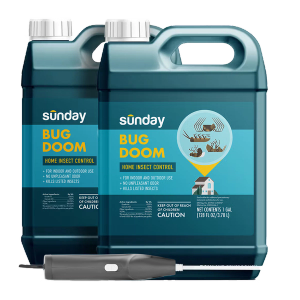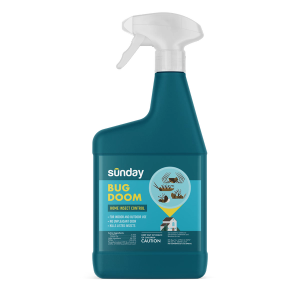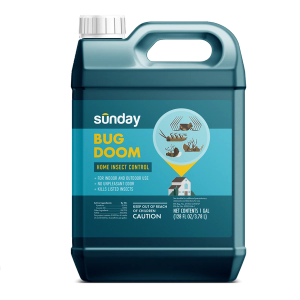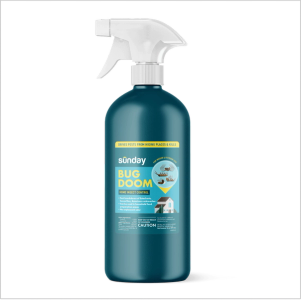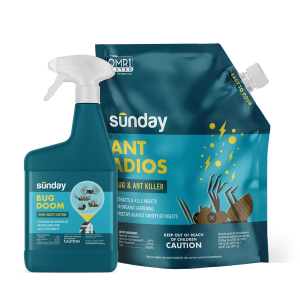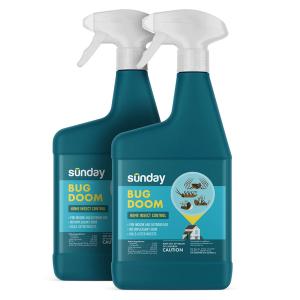What are moles?
It's rare to spot a mole above ground. These solitary rodents spend most of their lives underground. With broad feet fit for digging, and a coat of shiny dark fur, these insectivores feed on earthworms, grubs and other inverts but love to use grass for nesting. They create grass-lined burrows 1 ½ to 2 feet below the surface, often under tree roots, sidewalks, and buildings.

What are voles?
Unlike moles, voles live above ground. Easily mistaken for mice, voles are most commonly spotted darting across lawns or through fields. With their compact bodies, brown fur and short hairy tails, these herbivores feed almost exclusively on plants and turf. Well-suited for digging, voles are active year-round, both day and night, but typically are more prevalent in areas with higher snowfalls.
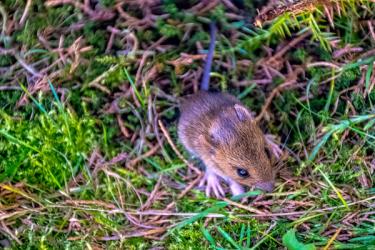
How to identify mole & vole damage
Tunnels, channels, and even holes in your lawn are a great indicator of rodent problems. But how do you know if it’s a mole, or some voles to blame?
No entry hole then it’s a mole
Look for low ridges of soil or mounds of dirt. If there are no entry holes, then you are probably dealing with a mole.
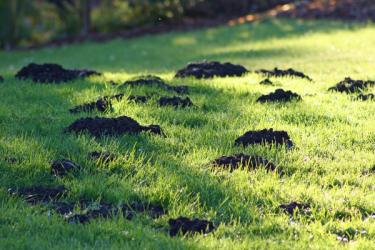
Burrow in the snow then it’s a vole
If there is a ground burrow or entry hole (usually about 1 inch across), then you have voles. Check for runways in the turf to be sure. They will be most visible after snow melts.
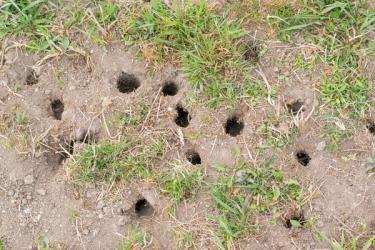
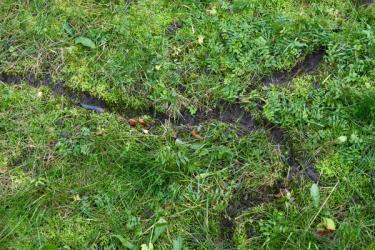
How to manage moles and voles
One of the easiest ways to mitigate moles and voles is to simply collapse their tunnels and channels. You should level out raised mounds or tunnels by hand (or foot) or with a heavy lawn roller. Not only is this approach safer, but it makes mowing and maintenance easier. Once you’ve eliminated and filled in their tunnels, burrows and nests, it’s important to take steps to prevent them from resettling the area.
Sunday Tip:
After collapsing tunnels, be sure to seed the in areas of bare soil to create a dense, green lawn that will outcompete weeds and prevent sediment from entering waterways.
Deter pests with pets
The most natural way to deter moles is with predators. Pets will naturally chase, hunt and antagonize moles and voles, ensuring your lawn never becomes hospitable.
Repel rodents with castor oil
Using castor oil–based mole and vole repellents is another effective and non-toxic solution. With every form of repellent, it is important to follow the labeled instructions. Improper application can result in moles and voles just moving to another area in your yard. For best results, coordinate with neighbors to eradicate rodents from the entire area.
Set a trap
If pests persist, traps are another non-toxic solution. When using a trap, be sure to check them often because trapped rodents will attract scavengers. Whether you prefer a live or traditional trap, removing the captured rodents is key.
Call the professionals
The secret to successful DIY pest management is knowing when to phone a friend. Especially when it comes to mammalian pests. If moles and voles endure these options, call a local professional or consultant.
Sunday Tip:
Voles often feed on fallen or discarded bird seed. Eliminate this food source by placing bird feeders above pavement, pavers or cement. Then, sweep up and either compost or dispose of the seed.
No poison is the Sunday way
At Sunday, we recommend using an Integrated Pest Management (IPM) approach to pest control, not poisons and baits. In the wild, poisoned rodents don’t just disappear, they are often fed on by other predators and scavengers, especially birds of prey like raptors and owls. This moves bait or poison through the food chain and into the natural ecosystem where it causes inadvertent death and illness in those animals. These poisons also create an unnecessary risk for kids and pets. For safety sake, it’s always best to pass on poison.
Cited sources
The Difference Between Voles and Moles. New York State IPM Program.
What to do about moles. Michigan State University Extension.







